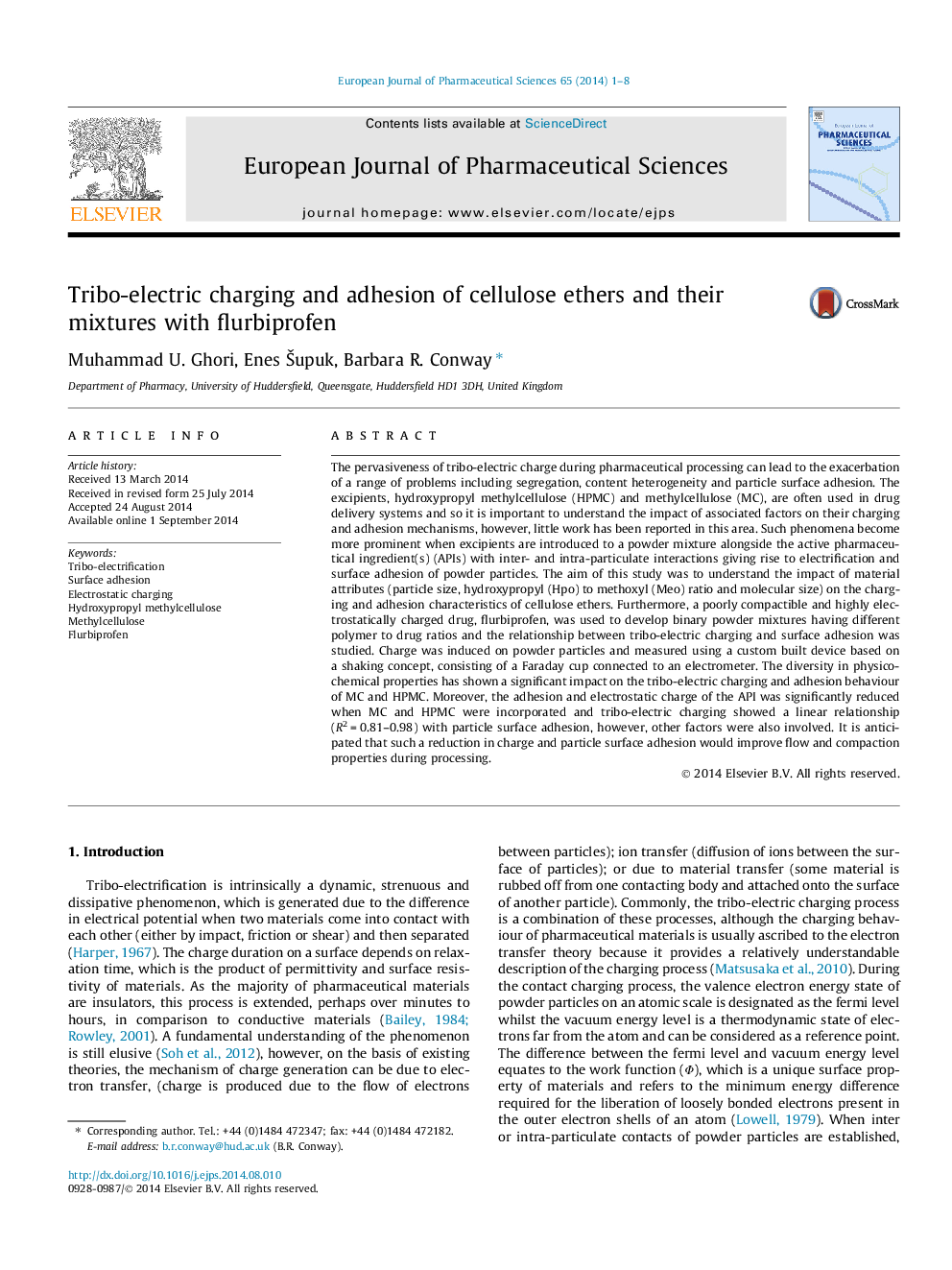| Article ID | Journal | Published Year | Pages | File Type |
|---|---|---|---|---|
| 5809922 | European Journal of Pharmaceutical Sciences | 2014 | 8 Pages |
The pervasiveness of tribo-electric charge during pharmaceutical processing can lead to the exacerbation of a range of problems including segregation, content heterogeneity and particle surface adhesion. The excipients, hydroxypropyl methylcellulose (HPMC) and methylcellulose (MC), are often used in drug delivery systems and so it is important to understand the impact of associated factors on their charging and adhesion mechanisms, however, little work has been reported in this area. Such phenomena become more prominent when excipients are introduced to a powder mixture alongside the active pharmaceutical ingredient(s) (APIs) with inter- and intra-particulate interactions giving rise to electrification and surface adhesion of powder particles. The aim of this study was to understand the impact of material attributes (particle size, hydroxypropyl (Hpo) to methoxyl (Meo) ratio and molecular size) on the charging and adhesion characteristics of cellulose ethers. Furthermore, a poorly compactible and highly electrostatically charged drug, flurbiprofen, was used to develop binary powder mixtures having different polymer to drug ratios and the relationship between tribo-electric charging and surface adhesion was studied. Charge was induced on powder particles and measured using a custom built device based on a shaking concept, consisting of a Faraday cup connected to an electrometer. The diversity in physicochemical properties has shown a significant impact on the tribo-electric charging and adhesion behaviour of MC and HPMC. Moreover, the adhesion and electrostatic charge of the API was significantly reduced when MC and HPMC were incorporated and tribo-electric charging showed a linear relationship (R2Â =Â 0.81-0.98) with particle surface adhesion, however, other factors were also involved. It is anticipated that such a reduction in charge and particle surface adhesion would improve flow and compaction properties during processing.
Graphical abstractDownload high-res image (61KB)Download full-size image
